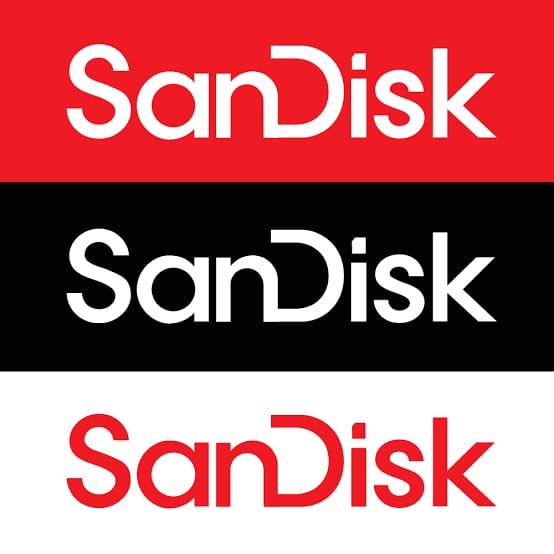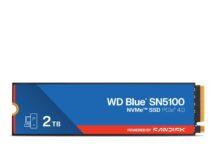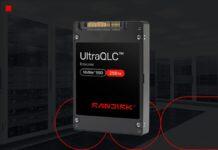🌿 Ruzu Non-Alcoholic Herbal Bitters
Ruzu Non-Alcoholic Herbal Bitters is a natural health supplement specially formulated to:
- ✅ Promote general wellness
- ✅ Detoxify the body
- ✅ Support the treatment of various ailments
Made from a powerful blend of 100% organic and medicinal herbs, Ruzu is completely alcohol-free, making it ideal for:
- 👪 All age groups
- 🌱 Health-conscious individuals
- 🌿 Anyone seeking non-alcoholic herbal remedies
Whether you're looking to boost your vitality, cleanse your system, or support healing the natural way, Ruzu Bitters offers a trusted herbal solution.
Enhancing Data Centre Operations with Flash Storage by Giorgio Ippoliti – Technologist, Field Applications Engineering EMEA, Sandisk
Over the past few years there has been considerable development in the performance, power and capacity capabilities of NAND solid-state drives (SSDs), and non-volatile memory express (NVMe™) drives. This has coincided with a growing demand for high-speed data access and processing.
The result? The adoption of Flash storage technologies within enterprise IT infrastructure has surged as organisations look to into technology to meet evolving data requirements such as handling intense AI workloads. The benefit of SSD implementation is that the technology can provide a faster, more reliable, and more energy efficient solution.
SSDs can offer a faster, more reliable, and energy-efficient solution. Accordingly, NAND developments, are now of significant importance for digital circuits and data storage. Furthermore, NVMe technology enhances SSDs with faster data transfer, lower latency, and reduced power consumption, making NVMe SSDs an outstanding choice for demanding applications like gaming, video editing, and enterprise data centres.
Today, breakthrough technologies like 3D NAND and quad level cell (QLC), flash are driving advancements in capacity, performance, and cost efficiency. QLC flash, a capacity-optimised NAND memory technology, offers a per-terabyte cost comparable to or lower than traditional hard disk drives (HHDs). These innovations continue to expand the potential of flash storage, reinforcing its role as a vital component in modern storage strategies in data-intensive environments.
Benefits of Flash Storage
Flash storage offers significant advantages for data centres, enhancing performance, efficiency, and scalability beyond traditional storage media. Key benefits include high speed and low latency, which accelerate read and write operations to optimise overall system performance. This speed boost comes with reduced energy consumption and lower heat production, cutting cooling requirements and operational costs.
Flash storage offers unparalleled flexibility in data centre environments, especially where consistent network connectivity cannot be guaranteed. By storing critical workloads on high-performance flash arrays, local data centres ensure uninterrupted access even during network or cloud service disruptions outages. Local flash solutions can also provide low-latency access to essential applications and dataset, to help optimise performance and reliability.
Compared to legacy storage mediums and optical media, Flash storage can excel in durability and resilience. Flash arrays have no moving parts, reducing the risk of mechanical failures. Additionally, they are resistant to electromagnetic interference, a vulnerability that still affects some traditional storage systems. These advantages make flash storage a terrific component of modern high-availability data centre architypes.
The compact form factor of Flash storage also enables higher-density storage, making it ideal for data centres with space constraints. Additionally, the absence of moving parts enhances durability and long-term stability, reducing the risk of mechanical failure. This reliability makes flash a robust solution for businesses seeking dependable storage.
Beyond performance, Flash storage delivers operational efficiencies that improve data centre management. Flash storage has fewer points of failure, extending its lifespan and reducing maintenance costs. This makes it a cost-effective, long-term investment. Additionally, the scalability of flash-based solutions, such as NVMe storage arrays, allows data centres to expand their infrastructure without compromising performance. With the ability to handle high input/output operations per second (IOPS), flash is well-suited for demanding workloads that require high throughput. These advantages make flash storage an essential technology for modern data centres, where performance, efficiency, and reliability are paramount.
Use Cases for Flash Storage
Flash storage is now utilised across a broad range of industries, particularly those that rely on data-intensive operations. Sectors such as financial services, healthcare, AI, machine learning (ML), and cloud computing greatly benefit from its low latency and high throughput. These capabilities enable real-time data analytics, rapid transaction processing, and high-speed content delivery — key factors in driving business agility and digital transformation. Additionally, as AI and ML workloads continue to expand, the ability of flash storage to handle vast datasets with minimal delay is becoming increasingly vital for innovation and efficiency.
Beyond these industries, sectors like e-commerce and retail leverage Flash storage to facilitate fast online transactions, power recommendation engines, and streamline inventory management. The speed of flash supports seamless customer experiences, real-time analytics, and dynamic pricing adjustments, ensuring businesses can respond quickly to market changes. Retailers also use flash to enhance personalisation strategies, optimise supply chains, and support omnichannel commerce, all of which rely on rapid data processing to deliver competitive advantages.
Flash storage also plays a crucial role in the public sector, including government, law enforcement, and defence. Its secure, reliable, and high-performance storage solutions are essential for handling classified data. Flash technology enables faster encryption, decryption, and real-time threat detection — critical for defence and intelligence applications where both security and performance are paramount. Additionally, municipal services and emergency response agencies benefit from flash storage’s ability to manage large volumes of real-time data, ensuring swift decision-making in critical situations.
The Future of Flash
Looking ahead, advancements in QLC, NAND scaling, and next-generation interfaces will continue to transform data centre infrastructures, driving improvements in performance, power efficiency, and scalability. Technologies such as 3D NAND and QLC are poised to accelerate flash storage innovation in the coming years. 3D NAND, which vertically stacks memory cells, increases storage density while improving performance and reducing costs. Meanwhile, QLC, capable of storing four bits of data per cell, significantly enhances capacity, making it a cost-effective solution for large-scale applications and high-volume storage needs.
Flash storage is set to play an even greater role in optimising data centre operations, with ongoing enhancements in power efficiency, performance, and capacity. QLC technology is driving down per-terabyte costs while enabling smaller, denser storage arrays, maximising space efficiency within data centres. At the same time, emerging interfaces such as PCIe 5.0® and Compute Express Link™ (CXL) are reducing data bottlenecks and boosting throughput, ensuring faster access to critical workloads. Additionally, the rise of computational storage is enabling more intelligent data processing at the storage level, further improving system efficiency.
With the expected further growth in AI workloads, combined with a need to increase endurance and further reduce energy consumption, the demand for low-latency flash solutions will grow, solidifying Flash as an in demand component in powering these technologies and shaping the next era of high-performance, scalable, and cost-effective storage solutions.
















